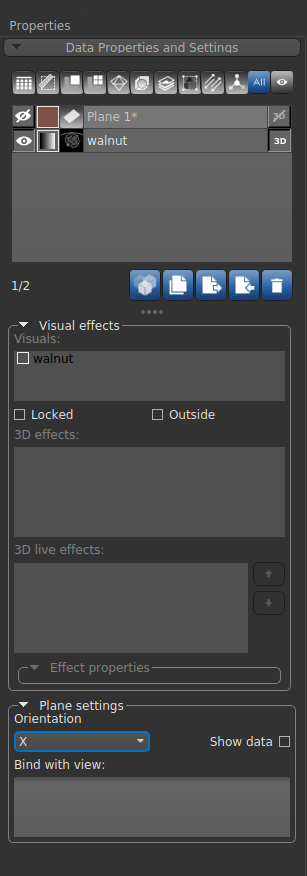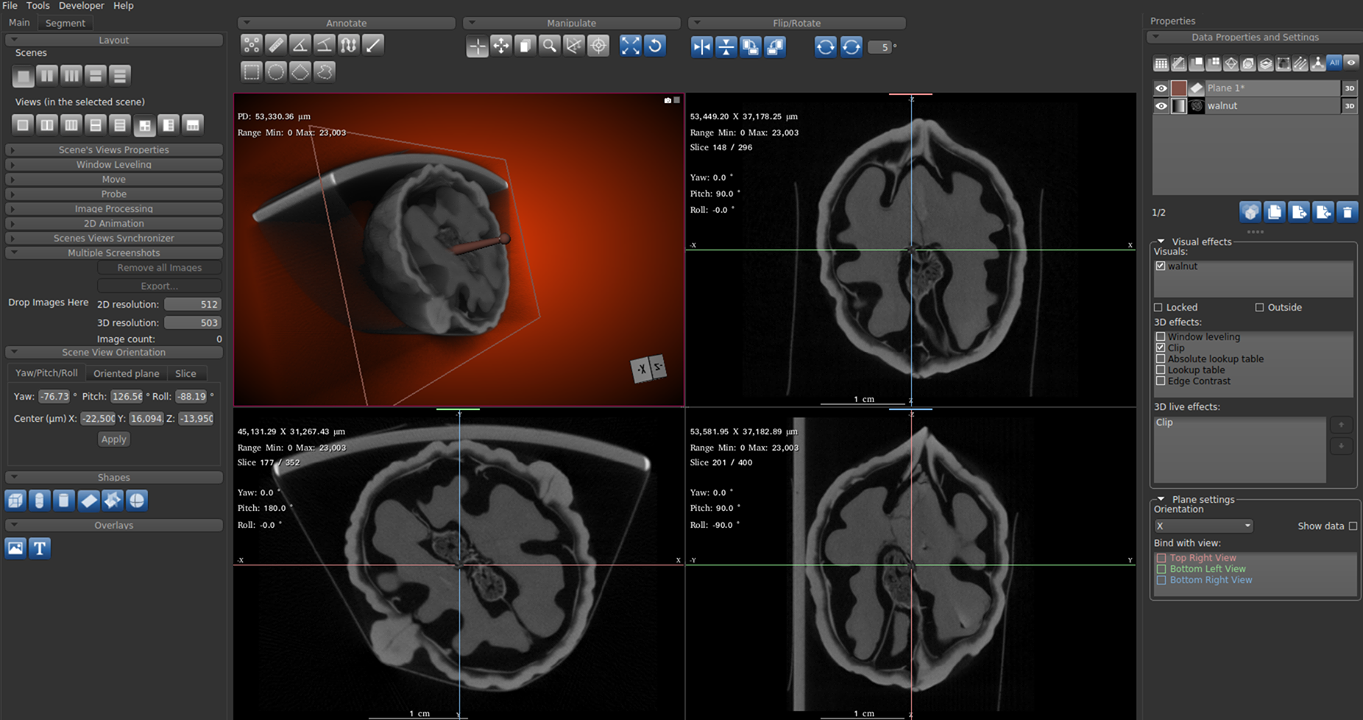In Dragonfly 4.1, we made some improvements (and changes) to Visual Plane. Now you won’t see a toolset panel named “Visual Plane” in the Main Tab of left sidebar. In stead, you need to create a new Visual Plane from the Shape toolset:

A new object named “Plane 1” will appear in the top-right list:

By default it’s invisible. Click the eye icon to make it visible, and click 3D to show it in 3D view. Check the dataset to which you want to use the plane (in my demo it’s the walnut dataset), and check the effect that you want (e.g., Clip):

Now you can see the volume has been clipped in 3D view. The handle of the plane can be seen only when the plane is selected in the top-right list as the current object. If you select the dataset as the current object, you won’t see the plane handle, nor the options for the plane underneath:

One improvement in Dragonfly 4.1 is that the visual plane created by the Shape tool can be associated with any 2D view, so when you move the plane, the associated view is automatically updated to be an oblique view. For example, we can bind the visual plane with the 2D Top Right View:

The “Show Data” option is also available in the bottom section of “Plane settings”.
